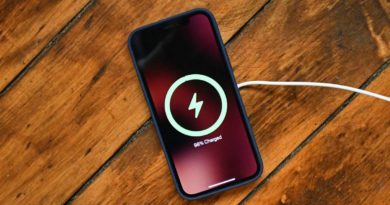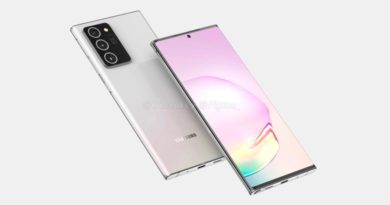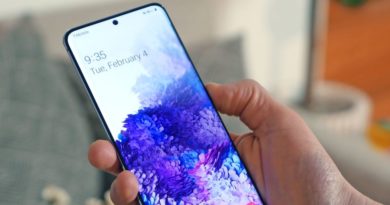I ditched Android for iPhone SE for a month — here’s the pros and cons
![]()
When the iPhone SE (2020) debuted earlier this spring, I argued that the phone’s impressive specs and reasonable price were enough to make a longtime Android diehard sit up and take notice. For $400, Apple’s latest phone gives you a powerful processor, a gorgeous screen and a robust camera, along with helpful bells and whistles like water resistance and wireless charging.
In effect, you get a flagship phone for half of what you’d pay for a premium device. The iPhone SE sounded better than its closest Android competitors on paper, and that got me wondering: Could it stand up to its Android rivals in real life?
In my experience, no. The iPhone SE is a powerful piece of hardware at an impressive price, but I found that the iOS experience drags the whole product down several notches. If you have $400 to spend on a phone, you should buy the Google Pixel 3a (or hold out for the anticipated release of the Pixel 4a). There are many reasons why, but foremost among them is the fact that your $400 will buy you a complete product when you opt for an Android device, and not simply a foot in the door of a much larger, more expensive ecosystem.
The experiment
After I made the argument in favor of the iPhone SE back in April, my editor proposed an unusual experiment: If the iPhone SE really looked that good to me, would I be willing to use one for a whole month? After all, if the iPhone SE could really usher in a new age of midrange smartphones, who would be a better test subject than a longtime Android user? I installed my SIM card in an iPhone SE on May 15, and kept it there for the next month.

While Apple admittedly isn’t my cup of tea, I resolved to go into this experiment with an open mind. I’ve reviewed Apple gadgets before, and I think I’ve always evaluated their strengths and weaknesses fairly. I’m also not a hardcore smartphone user by any means. I use my phone for calls, texts, e-mail, social media and the occasional mobile game. I don’t have a ton of apps, and I’d almost always rather use a computer, game console, tablet or e-reader. As such, I figured that anything I could do on an Android phone, I could probably do on an iPhone just as well.My hypothesis turned out to be about half-right.
What I liked about the iPhone SE
I found some things to like about the iPhone SE, and the Apple experience in general. First, I was able to download new interface and security updates the second they became available, rather than months down the line, whenever my wireless carrier deemed fit. The iPhone SE will continue getting vital security updates for years, rather than petering out after a year and a half, or less. Android really, really needs to step up its game in this department.
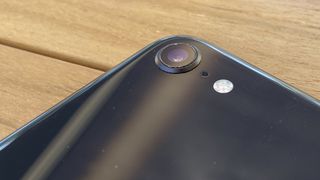
I also thought the pictures it took were just gorgeous. Even indoors, the color balance was spot-on, and the phone did a fantastic job of distinguishing between people and objects, foregrounds and backgrounds. I don’t think it’s considerably better than the Pixel 3a’s camera, but it’s definitely better than what most mid-range phones offer.
I also liked everything that the iPhone SE’s excellent hardware facilitated. The screen was bright, vivid and sharp, particularly since it crams a lot of resolution into a small space. Navigation felt snappy and immediate, whether I was playing a demanding 3D game or simply scrolling through my photo library. The phone never hangs or chugs; it just loads everything almost instantly. Going back to my aging Moto Z3 felt downright sluggish in comparison. The iPhone SE’s wireless charging was also cool, as I’ve never owned a phone with this capability before.
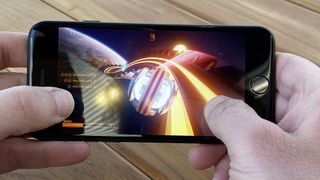
My very favorite part of the iOS experience, however, was Apple Arcade. For those who haven’t tried it, Apple Arcade is a $5-per-month subscription service that gives you unlimited access to a variety of high-quality games that aren’t available anywhere on Android. (They’re often available on Steam or Switch, to be fair.)
These games avoid the worst excesses of free-to-play mobile games, as not a single one allows in-app purchases. You get complete experiences that you can play for as long as you like without paying anything on top of the subscription fee. I wish that Android had a similar service.
What I didn’t like about iPhone SE
The first thing I noticed was that iOS doesn’t have a unified back button. This may seem like a small complaint, but on Android, returning to the previous screen in any app is crystal-clear. In iOS, every app has a different back button, and there’s no consistency about where it’s located. You might have to scroll to the top-left in one app, or the bottom-right in another, so learning how to exit your current screen by muscle memory is impossible.
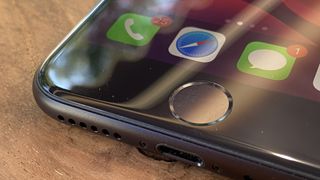
My second big realization was that there was no way to access my text messages on a PC. Thanks to Google Messages, I’ve become extremely used to using my PC to answer texts as long as I’m at home — which, these days, is most of the time. I know that iMessage is available on Macs, but Google Messages is available on both PCs and Macs, which seems like a much fairer arrangement.
Then, there was the feature that started driving me out of my mind on Day 1 and didn’t let up until Day 30: There is no comma or period on the iOS keyboard’s main screen. Instead, if you want to punctuate your thoughts, you have to go into a secondary menu. Although Android doesn’t have every punctuation mark on its default keyboard, either, you can press and hold the period button to get what you need. Fortunately, you can double tap the space bar in iOS to enter periods and also download third-party keyboards with more options.
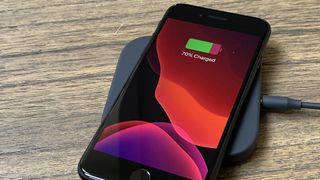
I ran into a number of other little annoyances during my time with an iPhone. There’s no unified app menu, so you have to scroll through pages of apps or else organize everything into folders manually. Apple seems to acknowledge that this is a problem, as iOS 14 will finally include a unified apps menu and a new App Library feature that automatically organizes your apps for you.
No iPhone model includes a microSD card slot, meaning you’re stuck with whatever amount of internal storage you buy — and that storage can get very expensive, as jumping from one capacity to another can add anywhere from $50 to $100 to the cost of your phone. The iPhone uses a proprietary charger rather than a USB-C, like every other modern phone in the world.
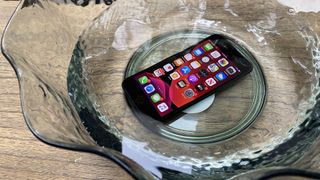
I also couldn’t stand the fact that iOS doesn’t let you simply drag and drop media files onto the system. You need to install iTunes on a computer, create a library, convert a bunch of files and sync everything manually, which is as time-consuming as it is tedious. You can’t create your own ringtones, you can’t install apps from non-Apple sources, you can’t access anything on an iPhone through Windows Explorer, and so forth. It’s an old argument, but it’s still true: iOS feels very restrictive if you’ve been with Android since the beginning.
To its credit, the iPhone SE let me do everything I normally do with a phone. But everything was just a little harder than it needed to be, for no real reason.
Accessorizing fashionably
When I let Apple know that I was planning to write this article, a spokesman suggested I complement the device with AirPods and an Apple Watch Series 5. Since the iPhone SE came out, customers have been buying the three gadgets together, since you can build a mini-Apple ecosystem for less than the cost of a flagship phone.

However, neither the Apple Watch nor the AirPods added much to the experience overall. I found the AirPods profoundly uncomfortable, and always on the verge of falling out. (The sound quality was excellent, to be fair.)
Seeing notifications on my wrist with the Apple Watch was kind of helpful, but it didn’t streamline my digital activities in any meaningful sense. Granted, I’d probably have similar complaints about a Wear OS device, but the point is that having two expensive Apple accessories didn’t do much to elevate a very average phone experience.
Back to Android
With an iPhone SE, I was still able to browse the Web, check my email, read books, play games, watch videos and so forth. My day-to-day activities were nearly the same as on Android. But I still experienced a profound feeling of relief when I booted up my old Moto Z3 again. The back button made navigation a snap and the open file format meant I could add anything media I wanted with a simple drag and drop.
Having given iOS a fair shot, I can honestly say that it’s not for me. And yet, there were a few things that I wish Android would learn from its competitor. Security and interface updates are vital, and need to happen ASAP, not whenever a carrier feels like it. Flagship processors belong in midrange phones. Mobile gaming doesn’t have to be a cesspit, if you can attract proven developers with unique ideas.
Ultimately, when it’s time to choose a new phone, you’re going to have to research both systems, then trust your gut. My gut will lead me back to a more open OS.
